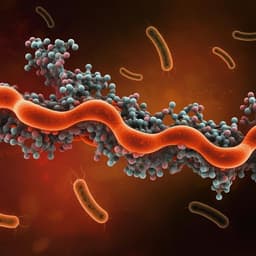
Economics
Higher food prices can reduce poverty and stimulate growth in food production
D. Headey and K. Hirvonen
This groundbreaking research challenges the belief that higher food prices lead to increased poverty. Conducted by Derek Headey and Kalle Hirvonen, the study reveals that in many middle-income countries, rising food prices may actually decrease poverty levels, especially in rural communities. Discover how agricultural supply responses and labor demands are reshaping economic landscapes in unexpected ways.
~3 min • Beginner • English
Introduction
The study examines whether increases in domestic real food prices raise or reduce poverty in low- and middle-income settings, especially over the short run when production and wage responses can occur. Although higher food prices reduce real incomes for net consumers (a large share of the poor), many poor households are engaged in agriculture and food marketing and may benefit through higher producer prices and increased labour demand. Previous short-run simulation studies, which classify households as net consumers or producers and typically abstract from supply and wage adjustments, tend to predict poverty increases from higher food prices. Yet theoretical and historical evidence suggests that higher prices can stimulate agricultural supply, increase demand for unskilled labour, and raise wages, potentially reducing poverty, particularly in rural and agrarian contexts. This paper uses annual data (2000–2019) for 33 middle-income countries to assess short-run associations between changes in real food prices, poverty, and food production, and to test whether impacts vary by a country’s level of urbanization or non-agricultural employment.
Literature Review
Prior research includes numerous simulation studies that generally conclude higher food prices increase poverty by focusing on net consumer vs net producer status (for example, Deaton 1989; Arndt et al. 2008; Benson 2008; Cudjoe et al. 2008; Ivanic & Martin 2008; de Hoyos & Medvedev 2011; and others). Contrasting evidence comes from models and assessments allowing for supply and wage responses: Jacoby (2016) for rural India shows higher food prices raise farm labour demand and wages, benefiting the non-farm poor; an economy-wide simulation for Uganda (Van Campenhout et al. 2018) finds similar results. Retrospective World Bank poverty assessments after 2007–2008 (Cambodia, Ethiopia, Uganda, Bangladesh) generally found poverty reductions, especially in rural areas. A cross-country panel (Headey 2018) found that domestic food price increases predict national poverty reductions over 1–5 years. Methodological work highlights under-measurement of agricultural output with standard recall-based surveys (Deininger et al. 2012; Carletto et al. 2022), implying that rural households are more often net producers than commonly estimated. Evidence on wage adjustments shows mixed but often rapid rural wage responses to food price increases (for example, Bangladesh), with potential attenuation over time. Overall, the literature suggests heterogeneity by rural/urban composition and the importance of accounting for supply and wage channels.
Methodology
Design: Annual panel-data analysis for 33 middle-income countries (MICs) from 2000–2019 using World Bank poverty measures. Primary dependent variables: (1) US$3.20-per-day poverty headcount (percentage points, main), and (2) poverty gap index. Key explanatory variable: annual change in real domestic food prices measured as the percentage change in the food-to-non-food CPI ratio.
Data sources: Poverty from World Bank’s Poverty and Inequality Platform; CPI components from IMF CPI database (with disaggregated indices and weights) and FAO CPI database; international price indices from FAO; agricultural output indices (food, crop, livestock) from FAOSTAT; agricultural GDP from World Development Indicators; controls from World Bank and FAO (non-agricultural GDP, money supply, exchange rates, terms of trade, battle-related deaths, surface temperature anomalies relative to 1951–1980). Urban population shares and non-agricultural employment shares used as country-level, time-invariant averages for interactions.
Construction of real food price: Annual change in the food-to-non-food CPI ratio, computed using January-to-January changes prior to the poverty survey year to ensure temporal precedence. For countries lacking non-food CPI weights, weights imputed via cross-country regressions of food CPI weights on log GDP per capita and validated.
Econometric models: First-difference OLS regressions with heteroskedasticity-robust (non-clustered) standard errors. Baseline model: Δpov_it = β ΔFoodPrice_it + Year_t + ε_it. Heterogeneity via interaction terms: Δpov_it = β ΔFoodPrice_it + γ (ΔFoodPrice_it × NonFarm_i) + Year_t + ε_it, where NonFarm_i is either average urban share or average non-agricultural employment share (treated as time-invariant within-country averages so they enter only via interaction). Sensitivity analyses include adding time-varying controls (non-ag GDP, money supply, exchange rates, terms of trade, conflict deaths, temperature), robust regression down-weighting outliers, and quantile regression. Additional test for crisis-specific effects by interacting with a crisis-year dummy (2007, 2008, 2010, 2011).
Mechanism analysis: Panel regressions of agricultural output growth on lagged changes in real food prices: ΔAgOutput_it = β ΔFoodPrice_{i,t-1} + λ X_it + Year_t + ε_it. Outcomes include FAO food production quantity index, agricultural GDP growth, crop production index, and livestock production index. Sample extended for output regressions to 501 observations across the same 33 MICs (excluding two outliers). Diagnostics indicate heteroskedasticity but no serial correlation in residuals; robust SEs used. All analyses implemented in Stata v17.
Key Findings
- Descriptive patterns: From 2000–2019 across 33 MICs, mean annual change in US$3.20/day poverty headcount was −0.43 percentage points. The food-to-non-food CPI ratio increased on average by 0.83 percentage points per year. In global ‘food crisis’ years, the domestic real food price index rose by just over 5% on average. International food price changes explain about 23% of the variation in domestic real food price changes.
- Main regressions (Table 1): In first-difference OLS with year fixed effects, increases in real domestic food prices predict reductions in the poverty headcount. Column 2 coefficient on food-to-non-food CPI ratio: −0.090 (95% CI: −0.148, −0.032), implying that a 1 percentage-point increase in the ratio associates with a 0.09 percentage-point fall in poverty; a 1 s.d. change (~5 pp) associates with a −0.45 pp change. Interaction models show attenuation with higher urbanization or higher non-agricultural employment:
- Urbanization interaction (cols 3–4): Main effect negative and significant (P<0.01); interaction term positive and significant (≈ +0.007 per pp of urban share; 95% CI roughly [0.002, 0.012]). In the least urbanized MICs, a 5 pp increase in real food prices is associated with about a −1.25 pp poverty reduction; around 70% urbanization, the effect is not statistically different from zero.
- Non-agricultural employment interaction (cols 5–6): Similar pattern; interaction ≈ +0.005 (95% CI [0.001, 0.009]). Benefits concentrate where agricultural employment shares are larger.
- Poverty depth: Using the poverty gap as the outcome, a 5 pp increase in the food-to-non-food CPI ratio is associated with a −0.6 pp reduction in the poverty gap index at low urbanization; effects weaken and can become positive in highly urbanized MICs.
- Robustness: Results hold when adding controls, when using US$1.90/day poverty line, under robust and quantile regressions, and are not driven by individual countries. No special effects during crisis years when interacting with crisis-year dummies.
- Mechanism—agricultural supply response (Fig. 4): Lagged increases in real retail food prices are positively associated with growth in agricultural output, particularly crops:
- Total food production index: A 5% real food price increase predicts ≈ +1.95 pp growth (OLS) and ≈ +1.75 pp (robust).
- Crop production index: ≈ +3.3 pp (OLS) and ≈ +1.8 pp (robust) per 5% price increase.
- Agricultural GDP growth: Positive but somewhat weaker association.
- Livestock production: No significant association with real food price changes.
Overall, higher real food prices are associated with short-run poverty reductions in more rural/agrarian MICs, likely operating through strong crop supply responses and induced increases in demand for unskilled labour and wages.
Discussion
The findings indicate that higher real domestic food prices, while potentially harmful to urban net consumers, are associated with short-run poverty reductions at the national level in less urbanized, more agrarian middle-income economies. This pattern is consistent with a mechanism in which increased food prices stimulate crop production, raising demand for unskilled labour and rural wages, thereby improving incomes among poor rural households, including non-farm rural workers. The attenuation and null (or even positive) effects in more urbanized or non-agrarian contexts reflect the larger share of net consumers and weaker links to agricultural labour markets. The results align with theoretical models and country case studies that incorporate general-equilibrium wage and production responses, and they help bridge evidence between very short-run simulations and multi-year retrospective assessments by focusing on annual changes. Policy implications include recognizing heterogeneity by urbanization and sectoral structure when designing safety nets and supply-side responses to food price shocks.
Conclusion
This study contributes three advances: it uses short-run annual panel data to assess how domestic real food price changes associate with poverty; it allows heterogeneous effects by urbanization and non-agricultural employment; and it empirically explores a key mechanism—agricultural supply responses. The evidence shows that higher real food prices are associated with reductions in poverty in less urbanized, more agrarian MICs, largely via strong crop production responses, while effects diminish in more urbanized economies. Future research should: (1) disaggregate rural and urban poverty and price data to directly assess differential impacts; (2) incorporate high-frequency wage and income monitoring to trace adjustment dynamics; (3) extend analysis to include fertilizer and fuel price shocks and policy responses; (4) pursue causal identification using exogenous price variation; and (5) examine how structural changes (urbanization, mechanization, migration) mediate these relationships over time and during crises like 2021–2022.
Limitations
- Data aggregation: Reliance on national-level poverty and price data precludes direct rural vs urban impact estimation; separate rural/urban poverty and price series are unavailable for many countries.
- Causality: The analysis establishes robust conditional associations but not causal effects. Domestic food price changes may correlate with unobserved shocks or policies (for example, droughts, conflicts, macro crises) that also affect poverty.
- Scope of prices: Focuses on food price changes; does not explicitly model fertilizer and fuel price increases, which may independently raise poverty.
- Temporal resolution: Annual data capture short-run adjustments but cannot resolve higher-frequency dynamics of income, wages, and prices.
- External validity to 2021–2022: Results from 2000–2019 may not fully generalize to the 2021–2022 context given tighter fiscal constraints and fertilizer supply issues that could dampen supply responses. Limited availability of consistent wage data across countries also constrains mechanism testing.
Related Publications
Explore these studies to deepen your understanding of the subject.







